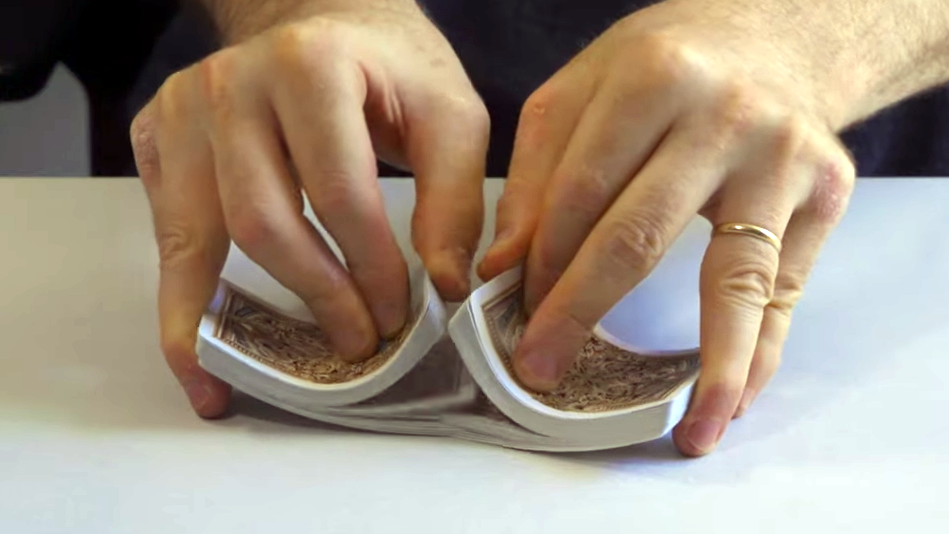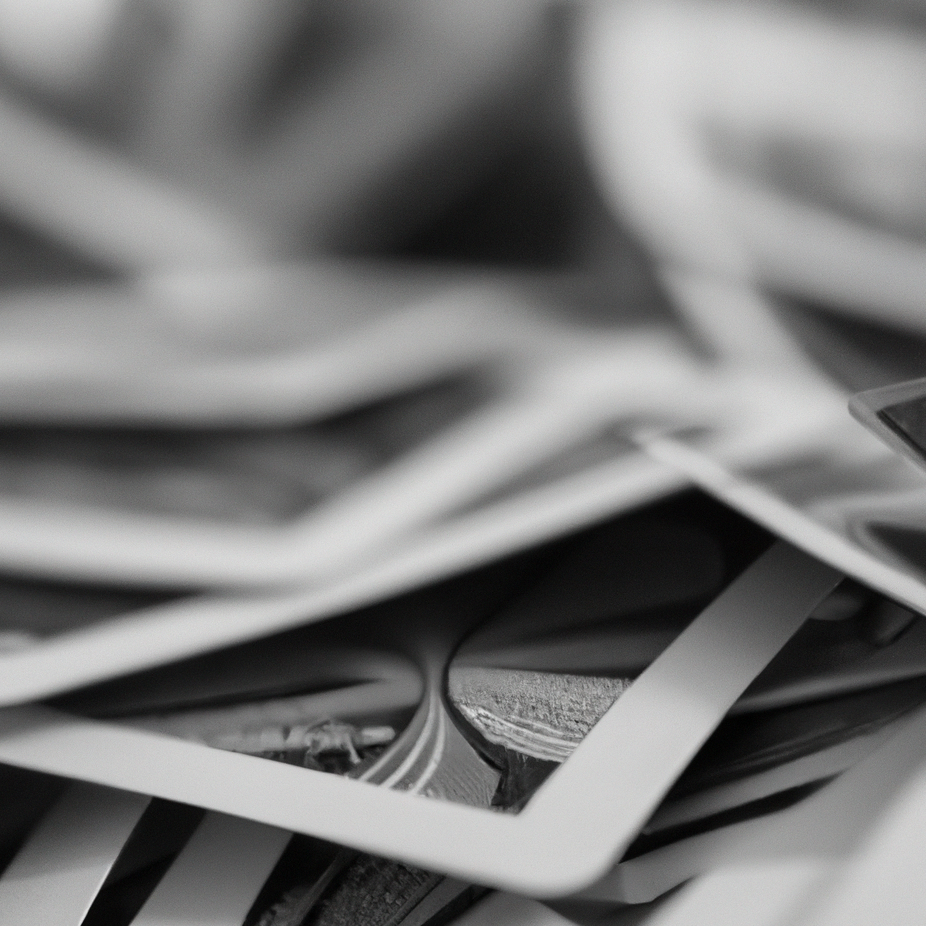Math Reveals How Many Shuffles Randomizes a Deck

Math — and some clever simulations — have revealed how many shuffles are required to randomize a deck of 52 cards, but there’s a bit more to it than that. There are different shuffling methods, and dealing methods can matter, too. [Jason Fulman] and [Persi Diaconis] are behind the research that will be detailed in an upcoming book, The Mathematics of Shuffling Cards, but the main points are easy to cover.
 A riffle shuffle (pictured above) requires seven shuffles to randomize a 52-card deck. Laying cards face-down on a table and mixing them by pushing them around (a technique researchers dubbed “smooshing”) requires 30 to 60 seconds to randomize the cards. An overhand shuffle — taking sections from a deck and moving them to new positions — is a staggeringly poor method of randomizing, requiring some 10,000-11,000 iterations.
A riffle shuffle (pictured above) requires seven shuffles to randomize a 52-card deck. Laying cards face-down on a table and mixing them by pushing them around (a technique researchers dubbed “smooshing”) requires 30 to 60 seconds to randomize the cards. An overhand shuffle — taking sections from a deck and moving them to new positions — is a staggeringly poor method of randomizing, requiring some 10,000-11,000 iterations.
The method of dealing cards can matter as well. Back-and-forth dealing (alternating directions while dealing, such as pattern A, B, C, C, B, A) yields improved randomness compared to the more common cyclic dealing (dealing to positions in a circular repeating pattern A, B, C, A, B, C). It’s interesting to see different dealing methods shown to have an effect on randomness.
This brings up a good point: there is not really any such a thing as “more” random. A deck of cards is either randomized, or it isn’t. If even two cards have remained in the same relative positions (next to one another, for example) after shuffling, then a deck has not yet been randomized. Similarly, if seven proper riffle shuffles are sufficient to randomize a 52-card deck, there is not really any point in doing eight or nine (or more) because there isn’t any such thing as “more” random.
You can watch these different methods demonstrated in the video embedded just under the page break. Now we know there’s no need for a complicated Rube Goldberg-style shuffling solution just to randomize a deck of cards (well, no mathematical reason for one, anyway.)
